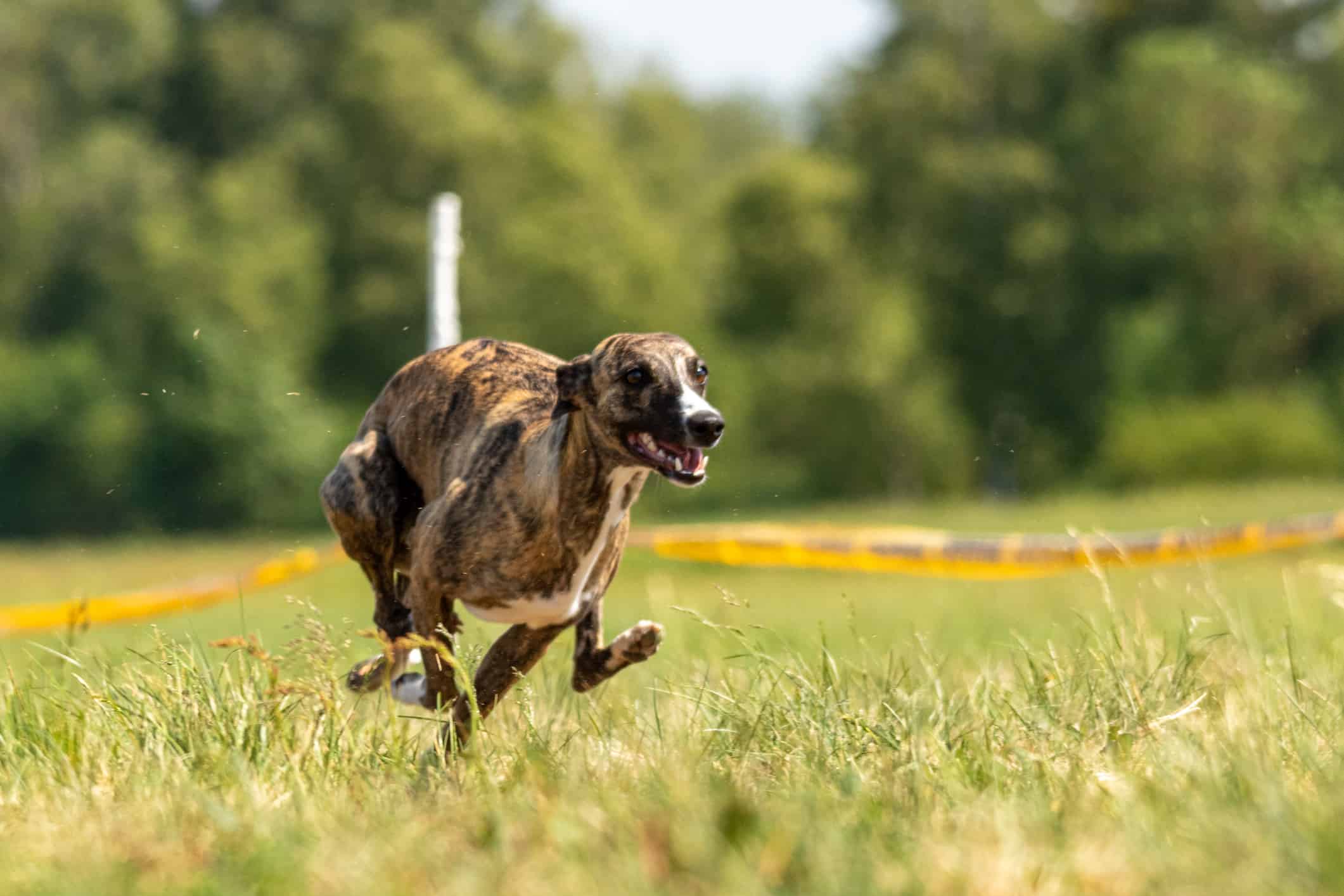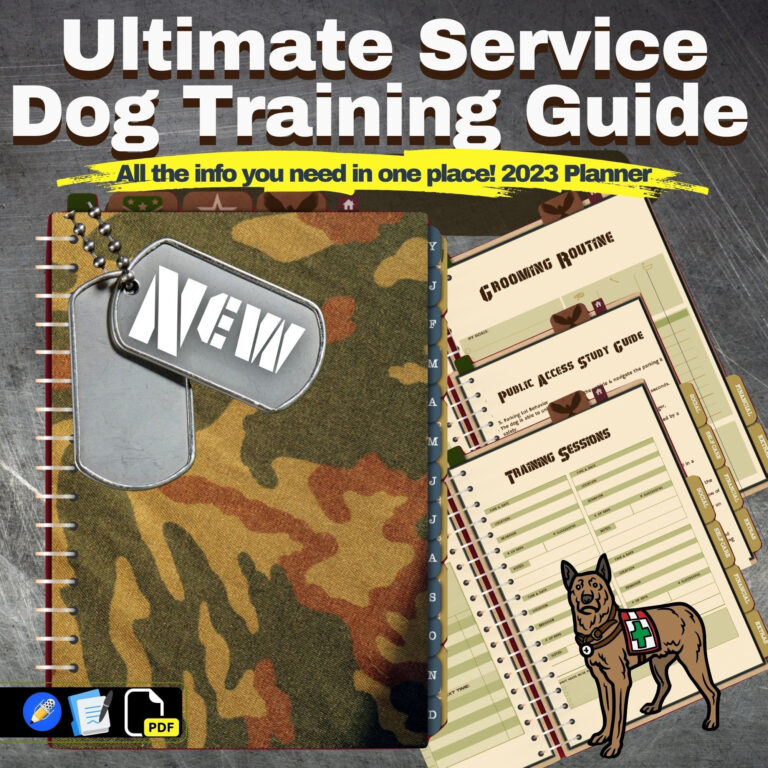To train your dog to be a service dog, start with basic obedience training, then move on to specialized tasks, and finally, formal training programs. Service dog training typically involves tasks that aid a person with a disability, such as picking up dropped items, opening doors, or providing emotional support.
It’s important to consult with a professional trainer or organization to ensure your dog meets the necessary qualifications and receives proper training. Training your dog to be a service dog requires patience, consistency, and dedication. Whether you are training your own dog or seeking a professional service dog program, understanding the specific requirements and steps involved is crucial.
We will explore the essential elements of training a service dog, including obedience training, task-specific training, and the legal considerations involved in certifying a service dog. By following these guidelines, you can effectively train your dog to be a reliable and supportive service animal.
Service Dog Training: Ultimate Success Guide
Understanding the role of a service dog: Training a service dog involves teaching it specific tasks to assist individuals with disabilities. It is crucial to understand the significance of the dog’s role in providing practical and emotional support.
The importance of the right temperament: A service dog must possess the right temperament, displaying traits such as intelligence, calmness, and an eagerness to learn. This ensures its ability to remain focused and responsive in various situations, ultimately benefiting the individual it serves.
Assessing Your Dog’s Potential
How to Train Your Dog to Be a Service Dog Assessing Your Dog’s Potential Key traits of a service dog Evaluating your dog’s readiness Training a service dog involves assessing your dog’s potential based on key traits. Traits such as calm temperament, intelligence, willingness to work, and adaptability to various environments are crucial for service dogs. Start by observing how your dog responds to different training tasks, social situations, and new environments to gauge their readiness. It’s important to assess your dog’s ability to remain focused amidst distractions and their ability to follow commands accurately. Consider seeking professional advice to get an expert evaluation of your dog’s suitability for service dog training. “`html
Training a service dog involves assessing your dog’s potential based on key traits. Traits such as calm temperament, intelligence, willingness to work, and adaptability to various environments are crucial for service dogs. Start by observing how your dog responds to different training tasks, social situations, and new environments to gauge their readiness. It’s important to assess your dog’s ability to remain focused amidst distractions and their ability to follow commands accurately. Consider seeking professional advice to get an expert evaluation of your dog’s suitability for service dog training.
Basic Training Fundamentals
Training your dog to be a service dog requires basic training fundamentals. Housebreaking is essential to teach your dog appropriate elimination habits and prevent accidents. Socialization is also crucial to expose your dog to different people, environments, and experiences.
Mastery of obedience commands is a foundation of service dog training. Teaching your dog to respond reliably to commands like “sit,” “stay,” and “come” is essential. Consistent practice and positive reinforcement are key to achieving mastery of these commands.
How To Train Your Dog To Be A Service Dog: Tailored Tasks
Identifying specific tasks for assistance: When training a service dog, it’s crucial to identify the specific tasks that will be most beneficial for the individual they will be assisting. Dogs can be tailored to perform a wide variety of tasks, including but not limited to: retrieving items, opening doors, providing stability and balance, alerting to medical symptoms, and more. Incremental training techniques for complex tasks: For more complex tasks, the training process should be broken down into smaller, achievable steps. For example, training a dog to recognize and respond to specific medical symptoms requires patience and consistency. By breaking down the task into manageable steps, the dog can gradually learn and master the behavior, leading to a successful service dog partnership.
Legal Requirements And Certifications
There are specific service dog laws and rights that dog owners need to be aware of when training their pets. Understanding these laws is crucial to ensure that your dog receives proper treatment and access to public places. Additionally, certification processes and organizations play a significant role in the training of service dogs. It is essential to explore the different certification options available and select the most suitable organization to certify your dog for service purposes.
Health And Care Considerations
Regular health check-ups: It is essential to schedule regular check-ups with your veterinarian to ensure your dog is in good health. Routine examinations can help identify any potential health issues early on and allow for timely intervention.
Emotional and physical well-being of your dog: Service dogs have demanding responsibilities, so it is crucial to prioritize both their emotional and physical well-being. Providing a balanced diet, regular exercise, and mental stimulation are all vital aspects of caring for a service dog. Additionally, ensuring they have a safe and comfortable environment to rest and recuperate is equally important for their overall well-being and performance.
Advanced Training Strategies
To ensure your dog is fully prepared for its service role, it’s essential to focus on distraction-proofing and public access skills. Gradually expose your dog to various distractions in controlled environments to build resilience and focus. Consistent training in public spaces will help your dog navigate real-world scenarios with confidence. Additionally, fine-tuning task performance is crucial for a service dog. Regular practice and reinforcement of specific skills will enhance its ability to assist effectively. Utilizing positive reinforcement techniques will foster a strong bond and motivate your dog to excel in its duties.
Working With Professional Trainers
In order to properly train your dog to be a service dog, it is important to know when to seek professional help. Collaborating with a certified trainer can greatly improve the training process and ensure that your dog is properly prepared for its role as a service animal.
Preparing For Public Access
To train your dog to be a service dog, the first step is to ensure they are well-prepared for public access. When navigating different environments, it’s important to focus on their ability to remain calm and obedient. Introducing your dog to various settings, such as busy streets and loud environments, can help acclimate them to different surroundings. Etiquette and safety in public spaces are crucial aspects of their training. Emphasize the importance of leash manners, polite greetings, and respecting boundaries. Additionally, teaching your dog to remain focused on their handler and ignore distractions is essential for their role as a service dog. Consistent training and positive reinforcement will help your dog become confident and well-behaved in any public setting.

Credit: highlandcanine.com
Troubleshooting Common Issues
When training your dog to be a service dog, it is important to address behavioral challenges. Consistency is key for successful training. Establish a routine and stick to it. Reward good behavior and be patient with setbacks. Seek professional guidance if needed for specific challenges. Additionally, understand that training takes time and effort, so be persistent. Remember to stay calm and positive, as your dog can pick up on your emotions. It’s important to maintain a structured environment and provide regular exercise. Creating a strong bond with your dog is essential, so spend quality time together. By addressing behavioral challenges and maintaining training consistency, you can help your dog become a successful service dog.
Frequently Asked Questions For How To Train Your Dog To Be A Service Dog
How Can I Train My Dog To Be A Service Dog?
Training your dog to be a service dog involves consistent obedience training, socialization, and specific task training to meet your needs. It’s important to work with a professional trainer and ensure your dog has the right temperament and health.
What Are The Requirements For A Service Dog?
Service dogs need to be well-behaved, able to perform specific tasks to assist with a disability, and have a calm, non-aggressive temperament. To qualify as a service dog, they must also be individually trained to work or perform tasks for a person with a disability.
Where Can I Get Professional Training For My Dog?
Look for certified dog trainers or organizations that specialize in service dog training. It’s crucial to find professionals with experience in training service dogs and a solid understanding of the legal requirements and ethical considerations surrounding service animal work.
Conclusion
Training your dog to be a service dog requires patience, consistency, and a deep understanding of your dog’s abilities. With dedication and proper training techniques, your dog can become a valuable asset in assisting individuals with disabilities. Remember, the bond you form with your dog is the key to their success as a service dog.
Keep practicing, stay positive, and enjoy the journey of turning your beloved pet into a dependable service animal.



